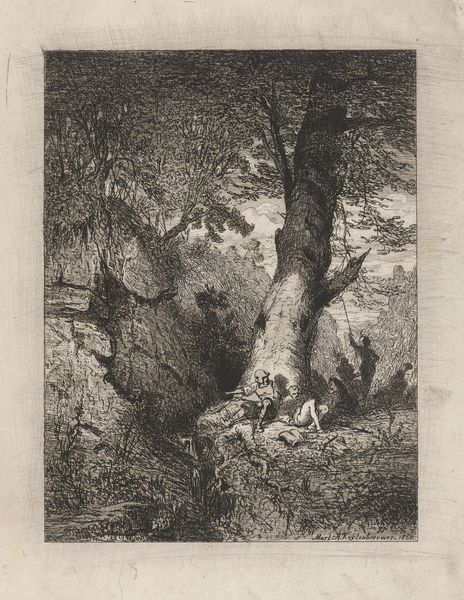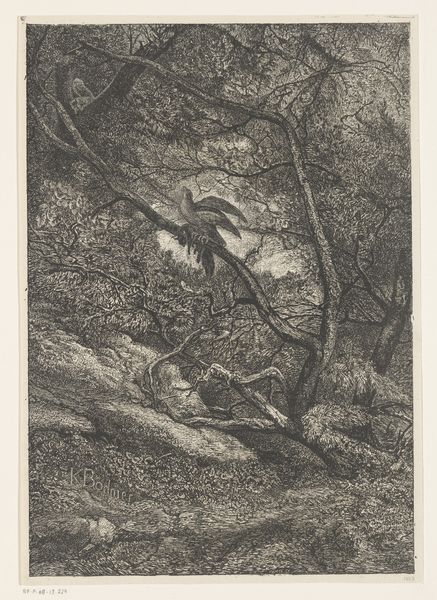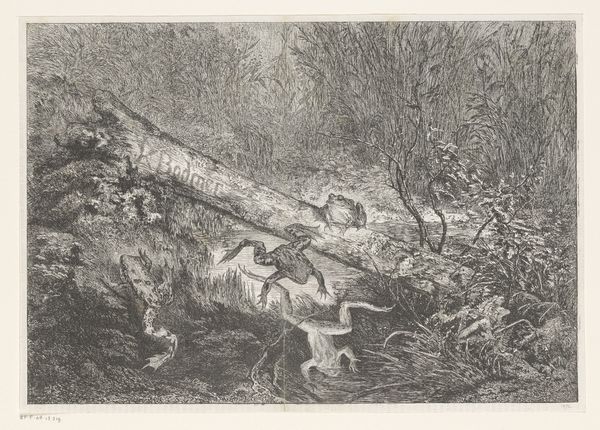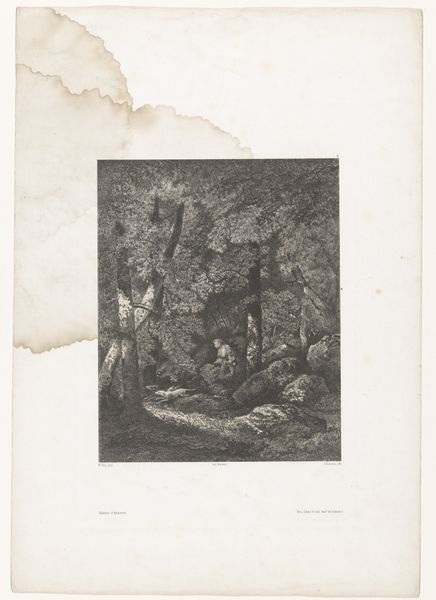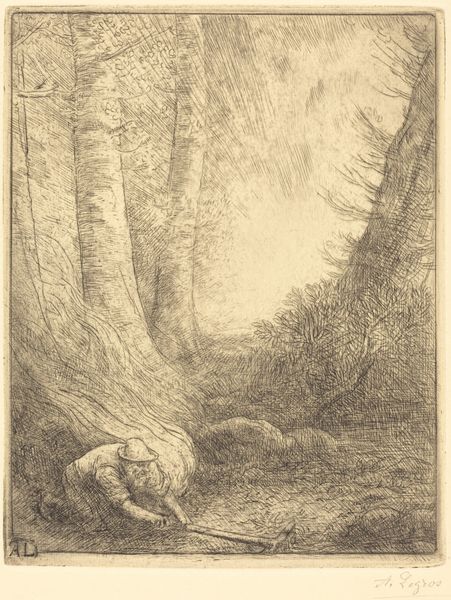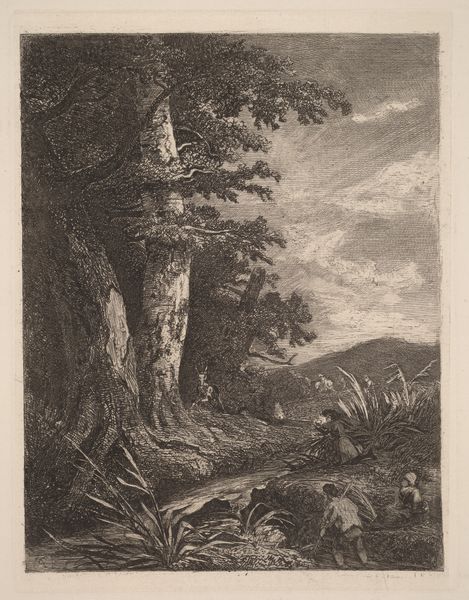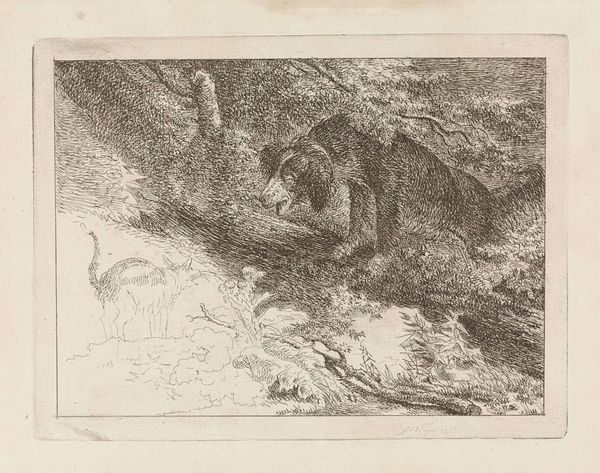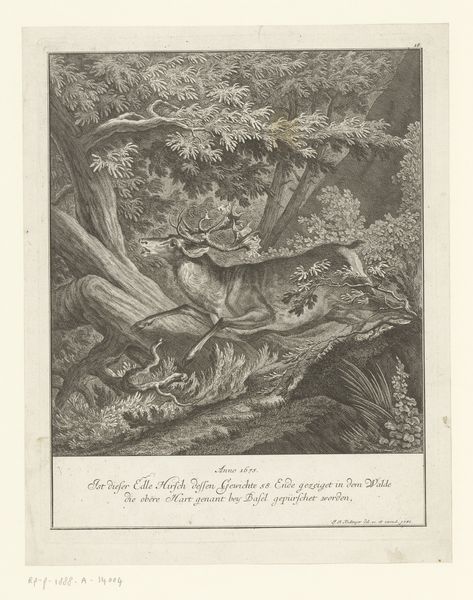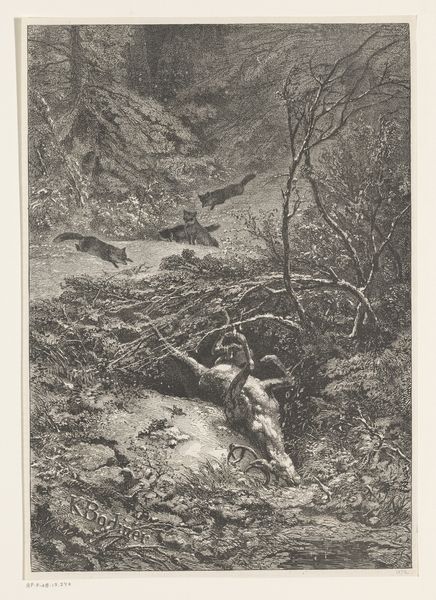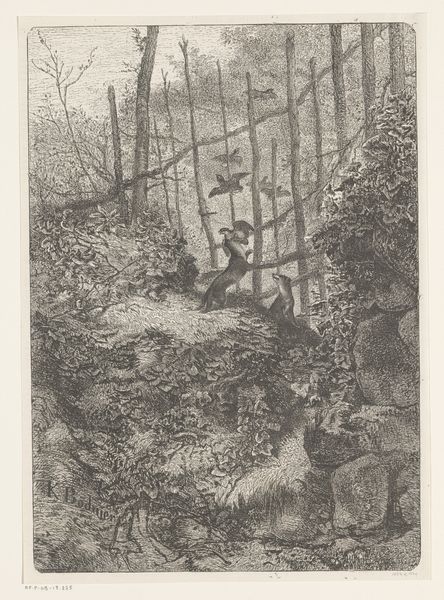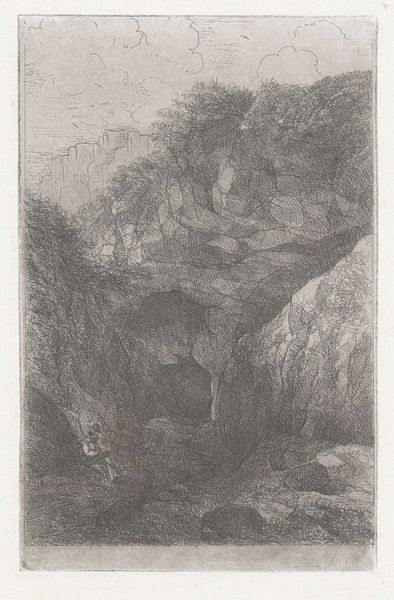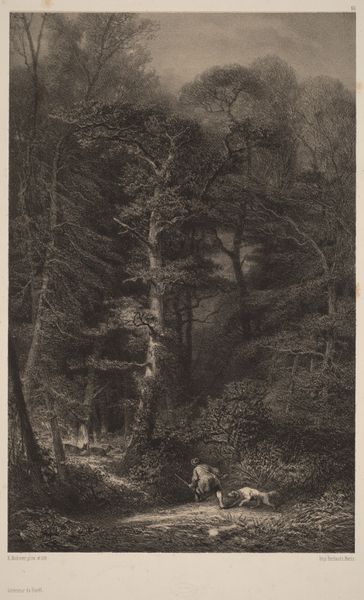
drawing, print, etching, pencil
#
pencil drawn
#
drawing
# print
#
pen sketch
#
etching
#
pencil sketch
#
landscape
#
pencil drawing
#
forest
#
pencil
#
line
#
realism
Dimensions: height 322 mm, width 234 mm
Copyright: Rijks Museum: Open Domain
Editor: This is "Vos voor zijn hol in het bos," or "Fox before its hole in the forest," created in 1869 by Karl Bodmer. It's a drawing or print, using etching and pencil. I'm immediately struck by the almost overwhelming detail of the forest; it feels incredibly dense and wild. What are your thoughts? Curator: This print really speaks to the changing relationship between humans and nature in the 19th century. Consider the context: industrialization was rapidly transforming the landscape. Art increasingly reflected a nostalgia for a more "natural" world, untouched by modernity. Does this portrayal of the fox and its den seem romanticized or realistic to you? Editor: I think there's definitely a sense of romanticism. The fox looks almost noble, and the den is presented as a peaceful haven. Was Bodmer making a statement about conservation? Curator: Perhaps, indirectly. Many artists of the time, even if not explicitly advocating for conservation, were drawing attention to the beauty and fragility of natural environments. Prints like these could be widely circulated, shaping public perception and influencing attitudes towards the environment. How might this image affect how people thought about wilderness and wildlife in an increasingly urbanized society? Editor: It probably reinforced the idea that these wild spaces needed protection, or at least appreciation. By showing this tranquil scene, it encourages viewers to value something that's disappearing. Curator: Precisely. And that appreciation, channeled through museums, galleries, and other institutions, could then translate into political will and eventually, perhaps, conservation efforts. The image itself becomes a political act. What have you observed that surprised you? Editor: I never really thought about landscape art as having such direct links to environmental politics and activism. That's a powerful connection. Curator: Indeed. It demonstrates how art acts as a mirror and a catalyst in the historical process. I'm now thinking about the role this image might have played in discussions of conservation efforts.
Comments
No comments
Be the first to comment and join the conversation on the ultimate creative platform.

